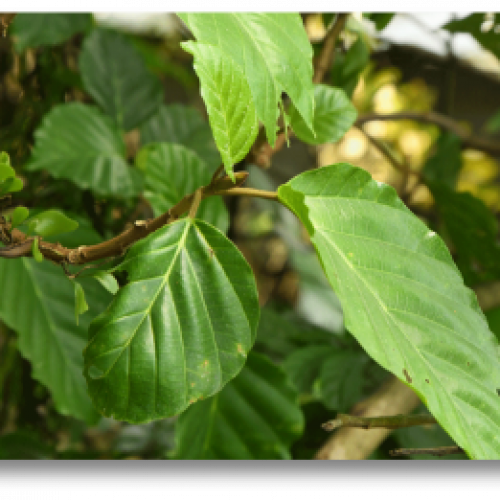Family Name
CECROPIACEAE
Scientific Name
Poikilospermum acuminatum (Trec.) Merr.
Synonyms
Conocephalus acuminatus Trec. (basionyms); Conocephalus diffuses Merr.; Conocephalus grandifolius Warb.; Conocephalus grandis (Wedd.) Merr.; Conocephalus mollis Merr.; Conocephalus warburghii Elmer; Poikilospermum diffusum (Merr.) Merr.; Poikilospermum grandifolius (Warb.) Merr.; Poikilospermum mole (Merr.) Merr.; Poikilospermum warburghii (Elmer) Merr.; Procris grandis Wedd.
Local Names
anapul (lg.); Anopal (Bik.); anopol (Ig.); hanopol (Tag.); pongau (Bon.)
Botanical Description
A climber with numerous upright woody stems anchored to the ground and to the base of the tree trunk by adventitious roots. Stem barely touching the tree trunk, 0.5-1 cm or more in diameter, without exudate, slightly fissured with prominent leaf scars and bud scars, pubescent, turning glabrous when mature; outer bark light brown to dark brown; inner bark brown. Old stems hollow. Leaves alternate spiral, simple, entire, ovate to rhomboid, apex sharply acuminate, base cuneate; blade 7-28 cm long, 5.5-16 cm broad, glabrous to hairy; petiole woody, 3-16 cm long, grooved, glabrous to dense hairy; stipules interpetiolar, 1.7-5 cm long, crescentic, coriaceous, maroon turning brown when dried; venation pinnately netted, craspedodromous with 9-11 pairs of straight lateral nerves. Female inflorescence branched dichotomously 7-9 times; primary peduncles 2-4 cm long; peduncular bracts green and caducous; heads 2-3 mm in diameter, located at the tip of ultimate dichotomies, composed of minute, cream-colored, fragrant flowers. Female flowers sessile, 0.75-1 mm, 4 toothed; ovary superior, 0.5-0.75 mm, unilocular, 1-ovuled; stigma obliquely capitate, brushlike; interfloral bracts very minute. Male inflorescence similar to female inflorescence but solitary terminal flowers arising from the axils of ultimate dichotomies. Male flowers sessile, 1-1.25 mm long, 0.75 mm broad, 4 tepals incurved at the apex; stamens 4; filaments slightly inflexed at the apex; interfloral bracts very minute. Fruits achenes, 1-2 mm long, 0.5-1 mm broad with the persistent perianth as the basal cup.
Distribution Ecology
Endemic to the Philippines. Found in Luzon, Camiguin, Samar, Leyte, Surigao and Catanduanes. In damp places of lowland secondary, limestone and mossy forests up to 1500 m. Flowering from June to August.
Other Economic Uses
A decoction of the whole plant is used in curing diabetes, high blood pressure and rheumatism.
Volume Estimate
In Quezon, 492.62lm/ha and in the Bicol Region, 671lm/ha.
Other Plant Notes
In Tayabas, Quezon, the species is highly valued for its medicinal properties. Although suitable for handicraft manufacture, it is not presently used for such purpose primarily because it is being conserved or preserved. Its increasing popularity as a medicinal plant has led to uncontrolled massive gathering and consequently, drastic decrease in available volume (Naynes, R., pers. Comm.1999).

